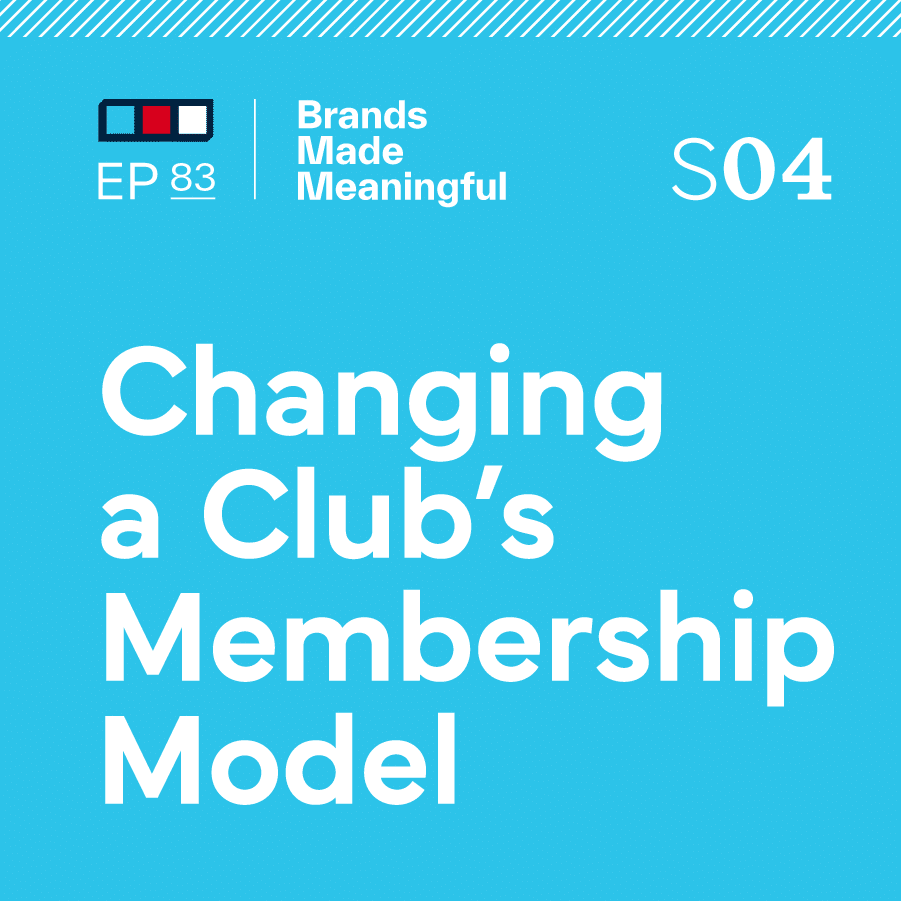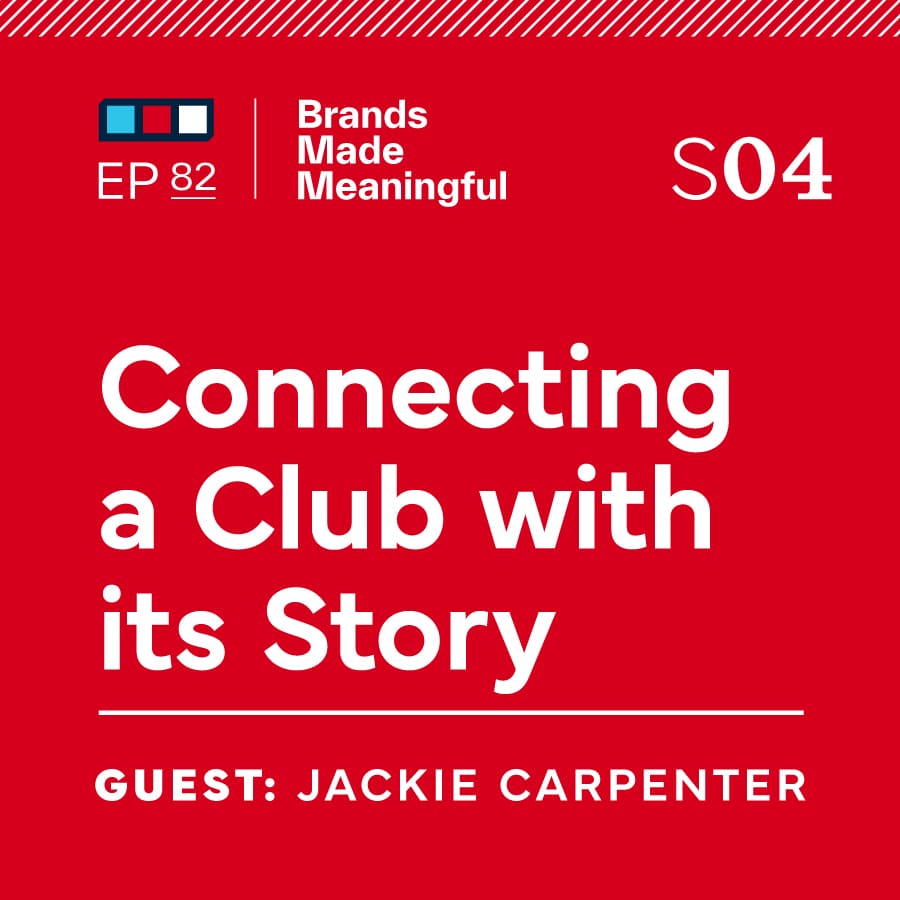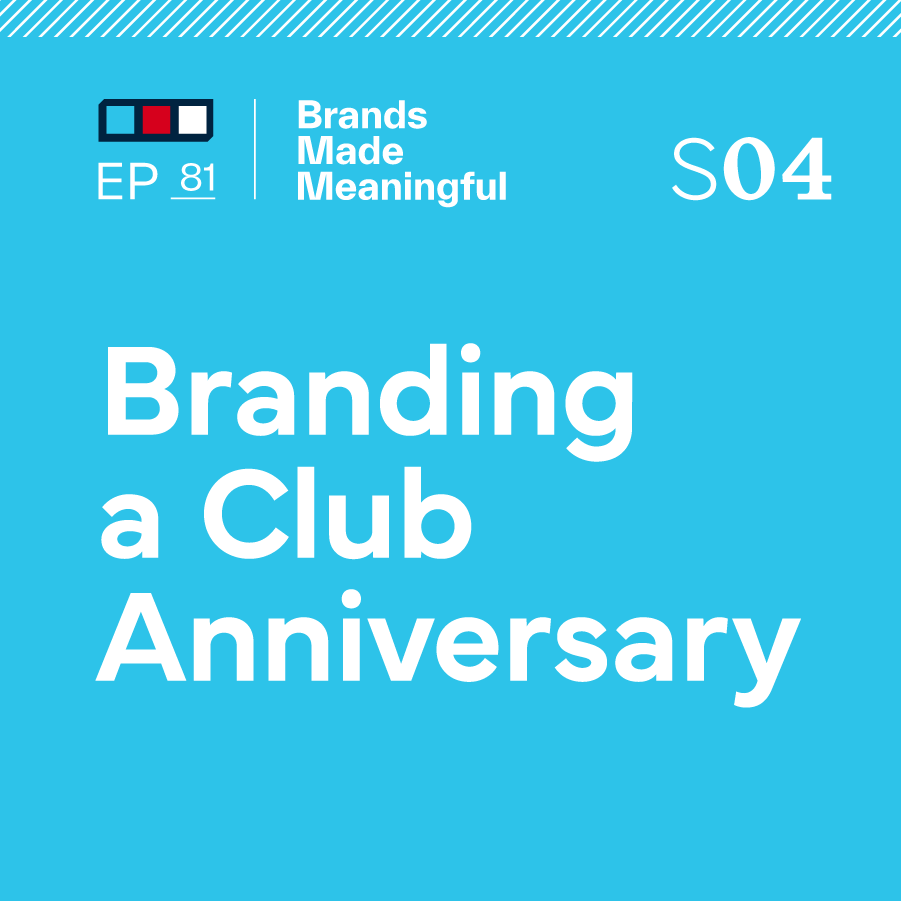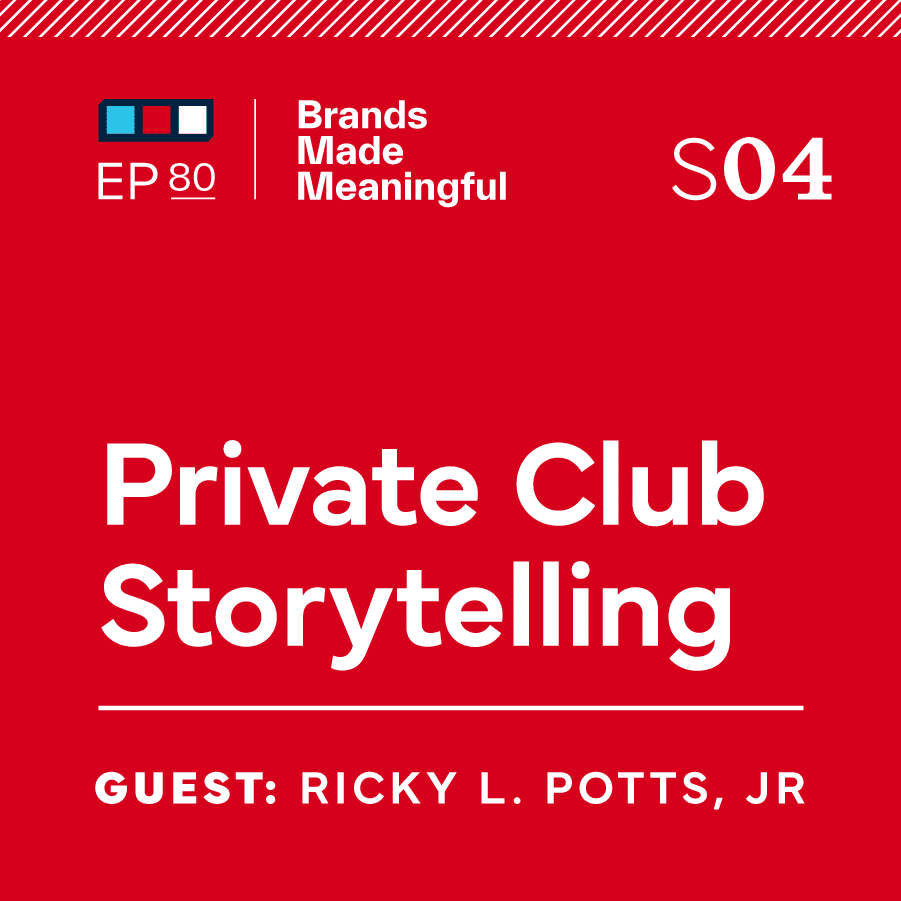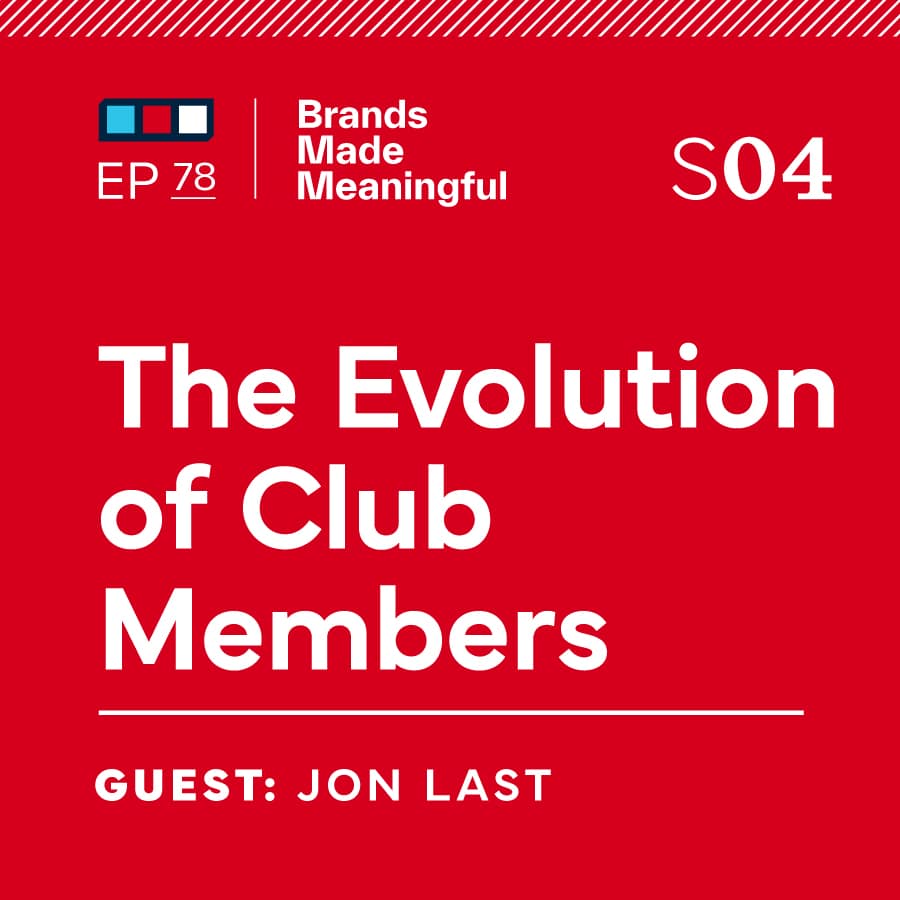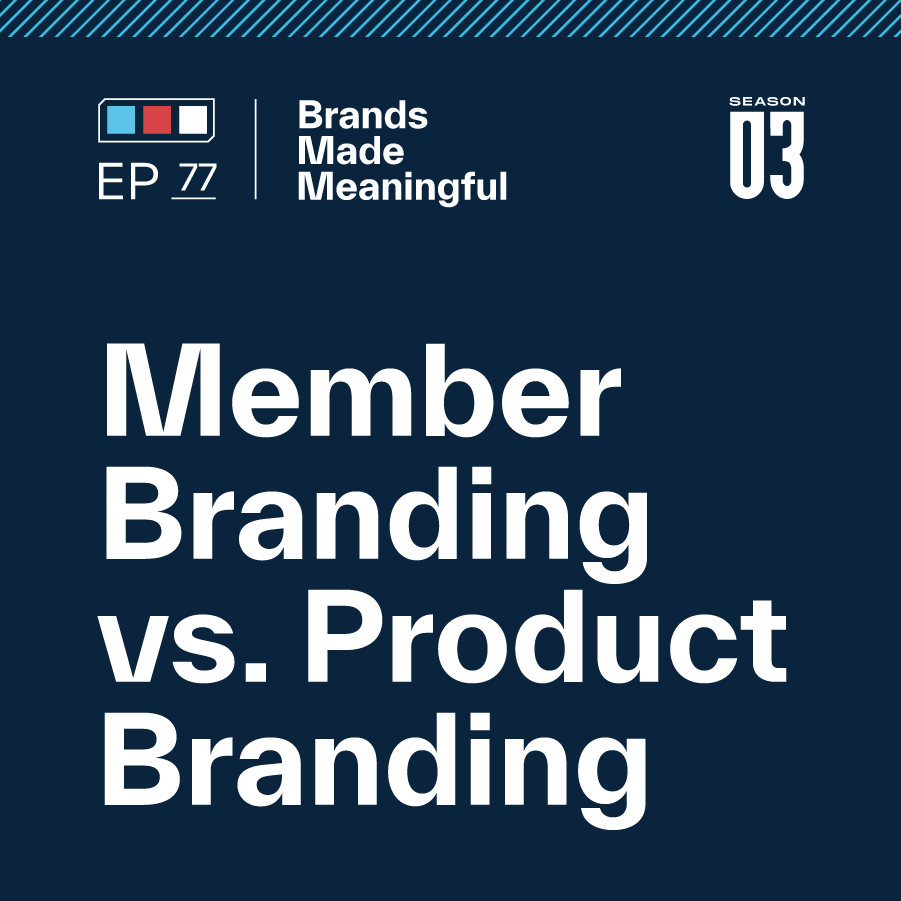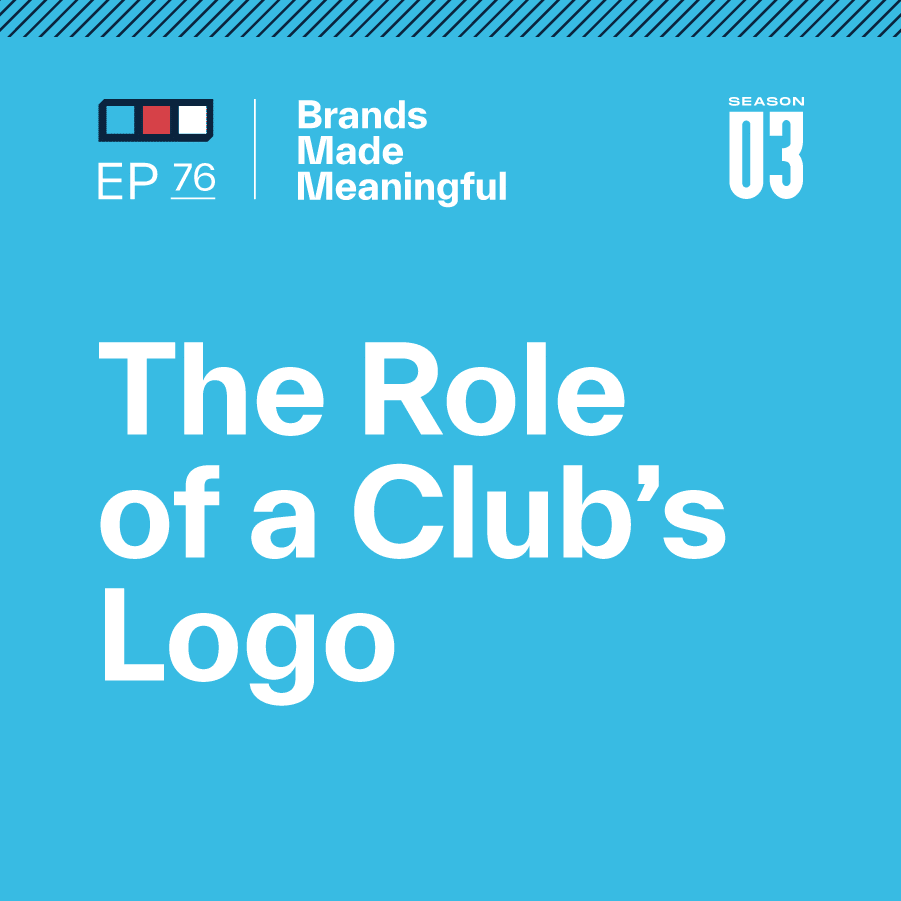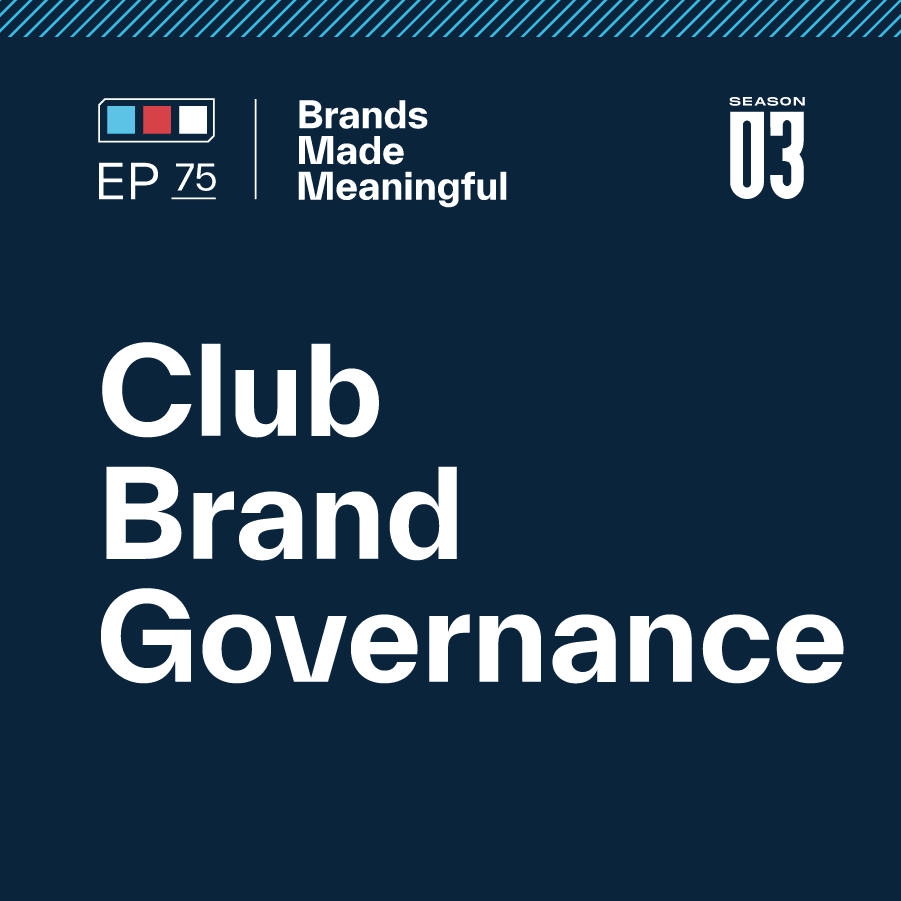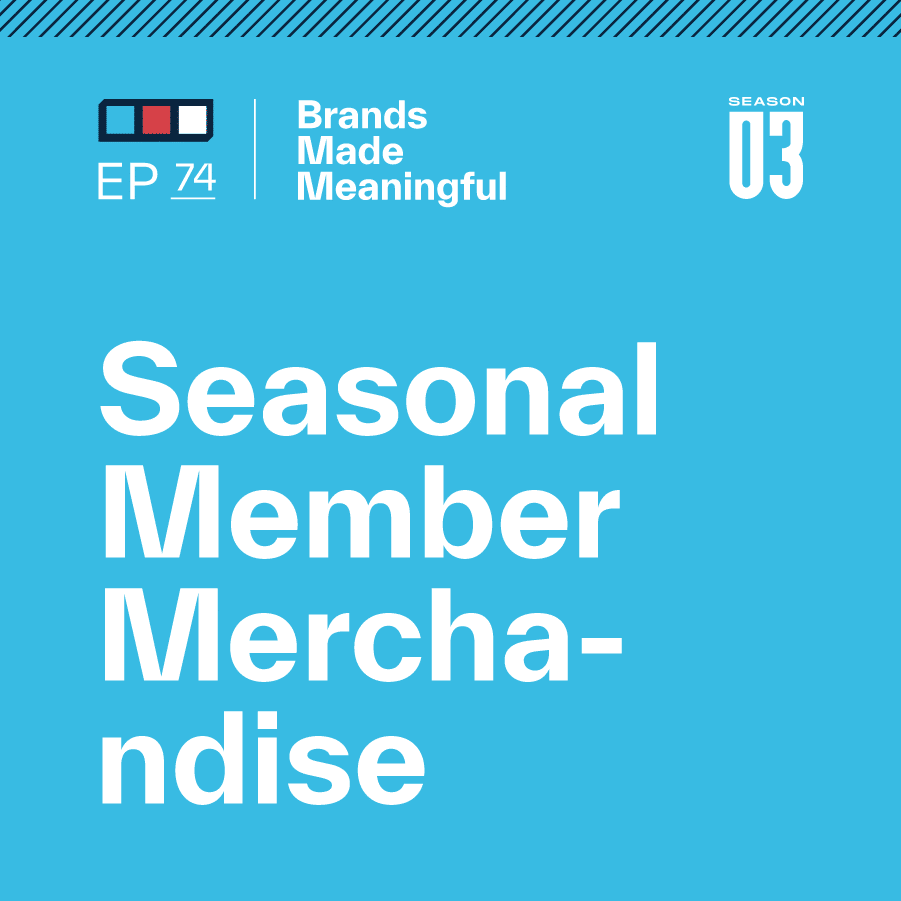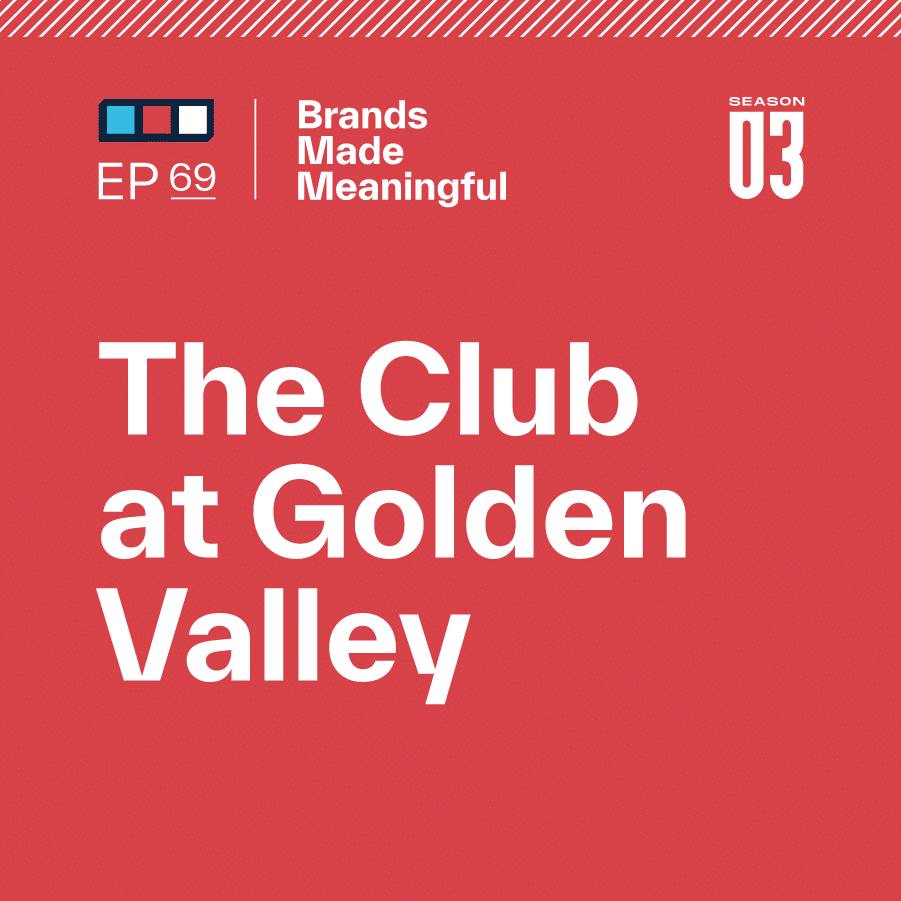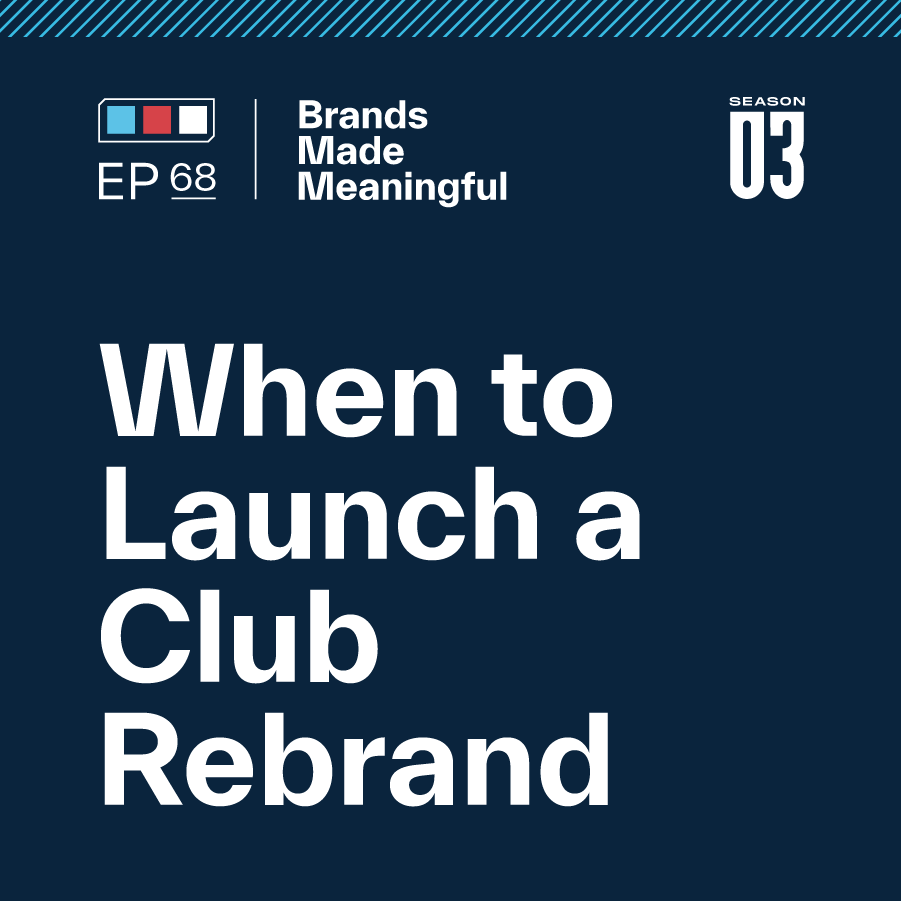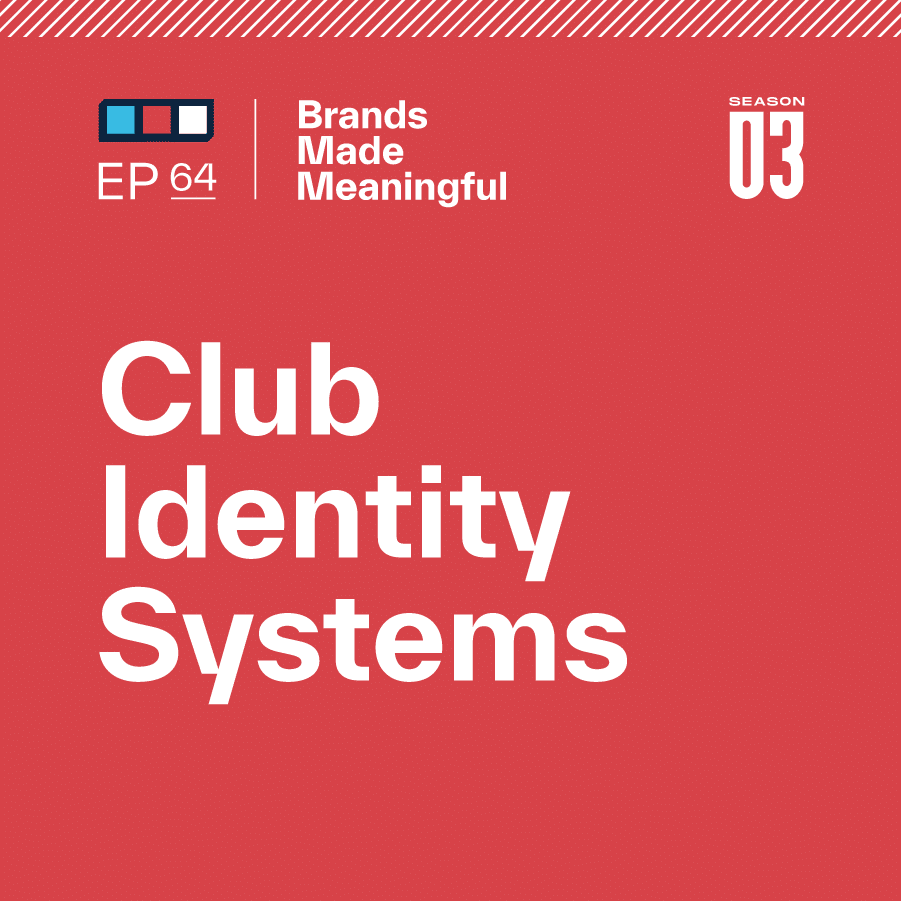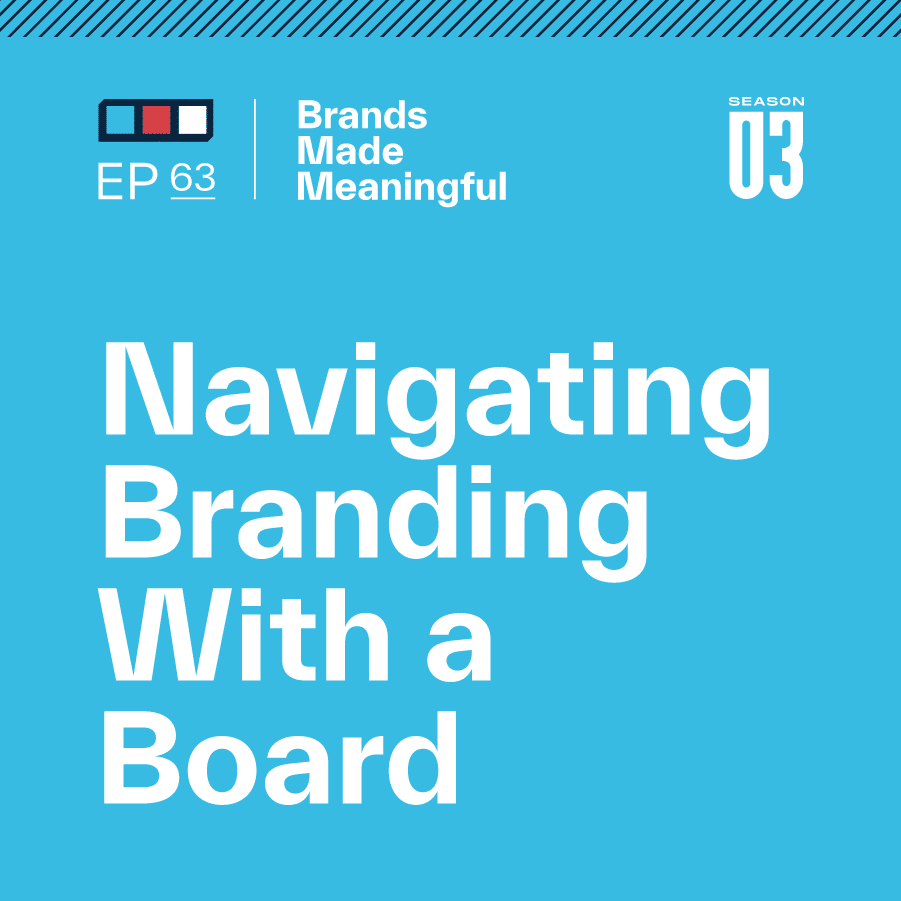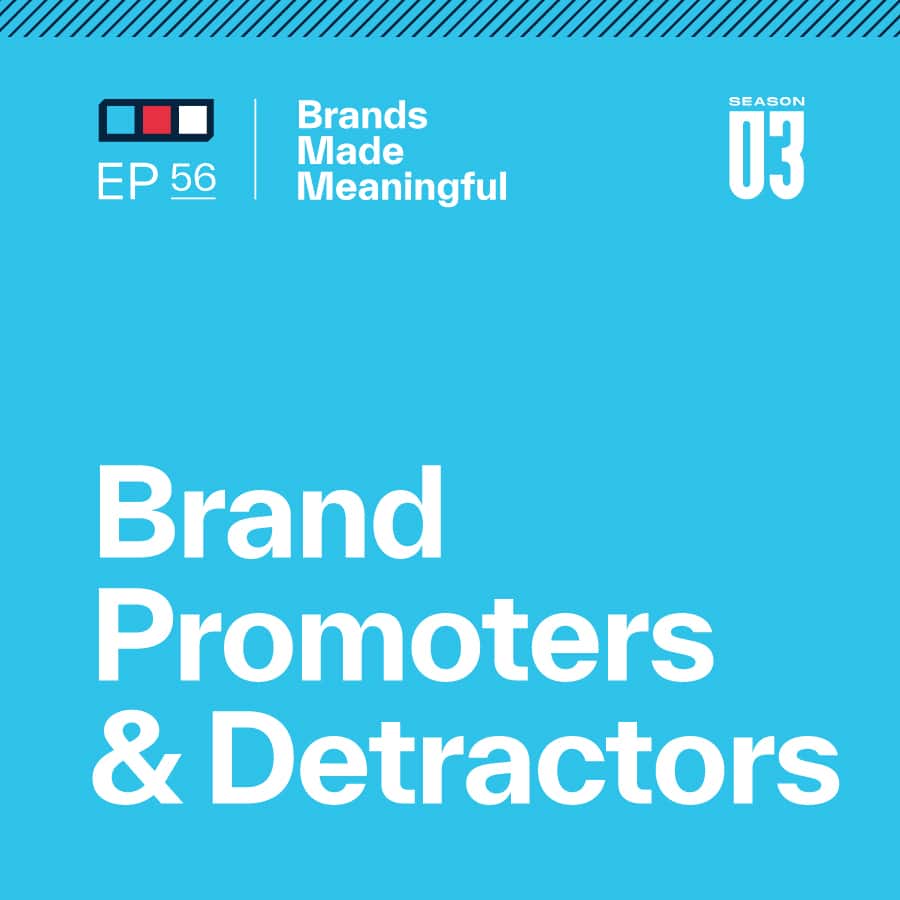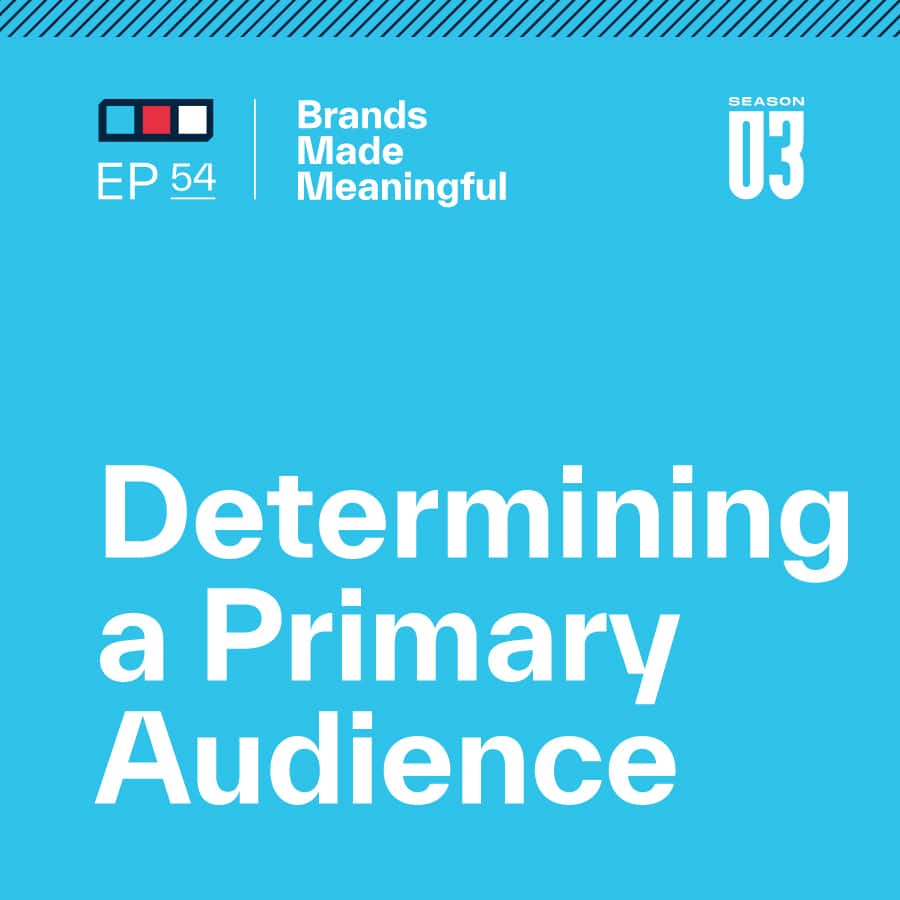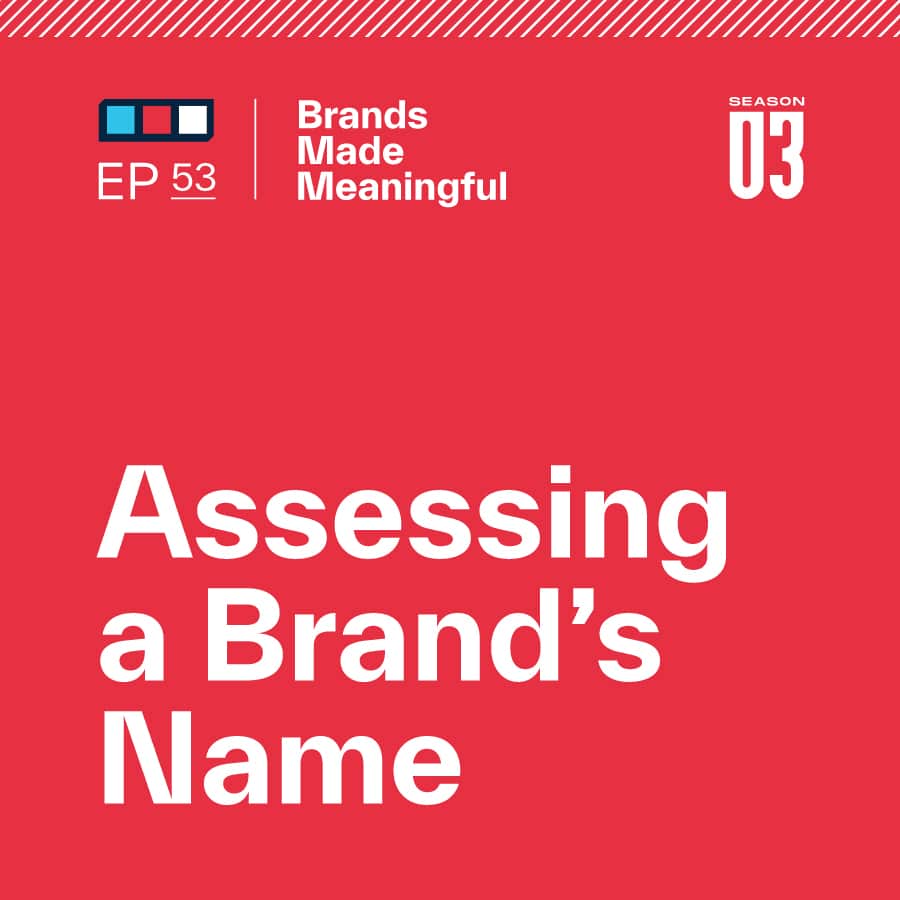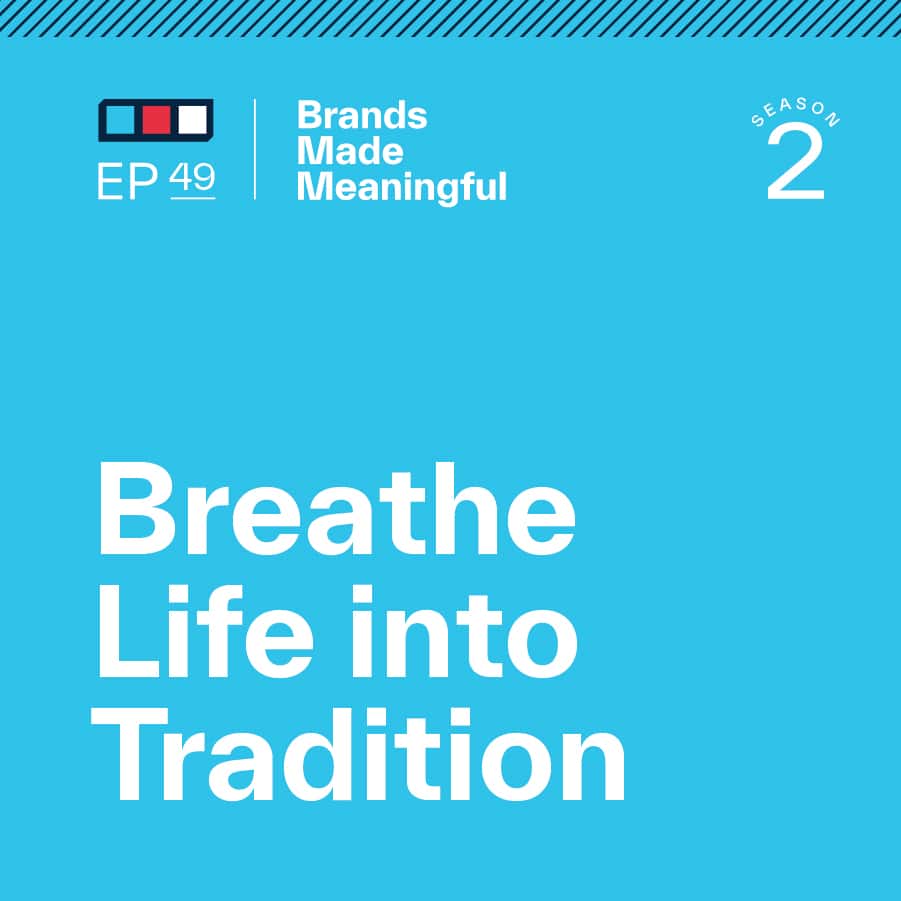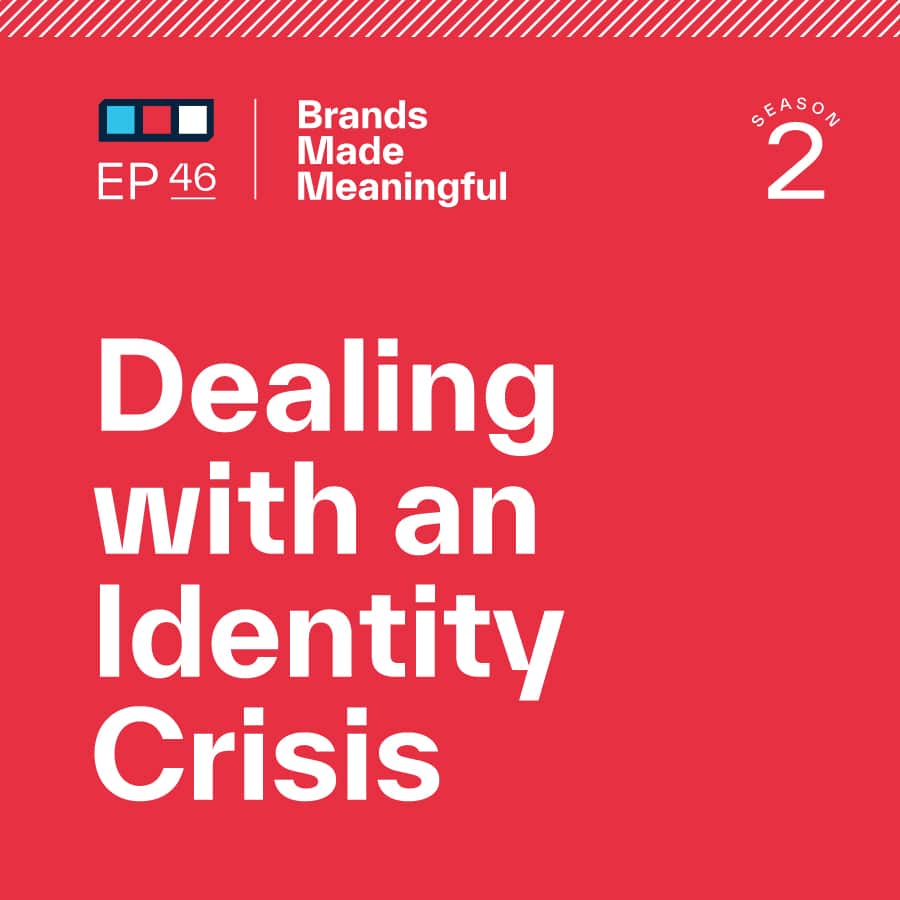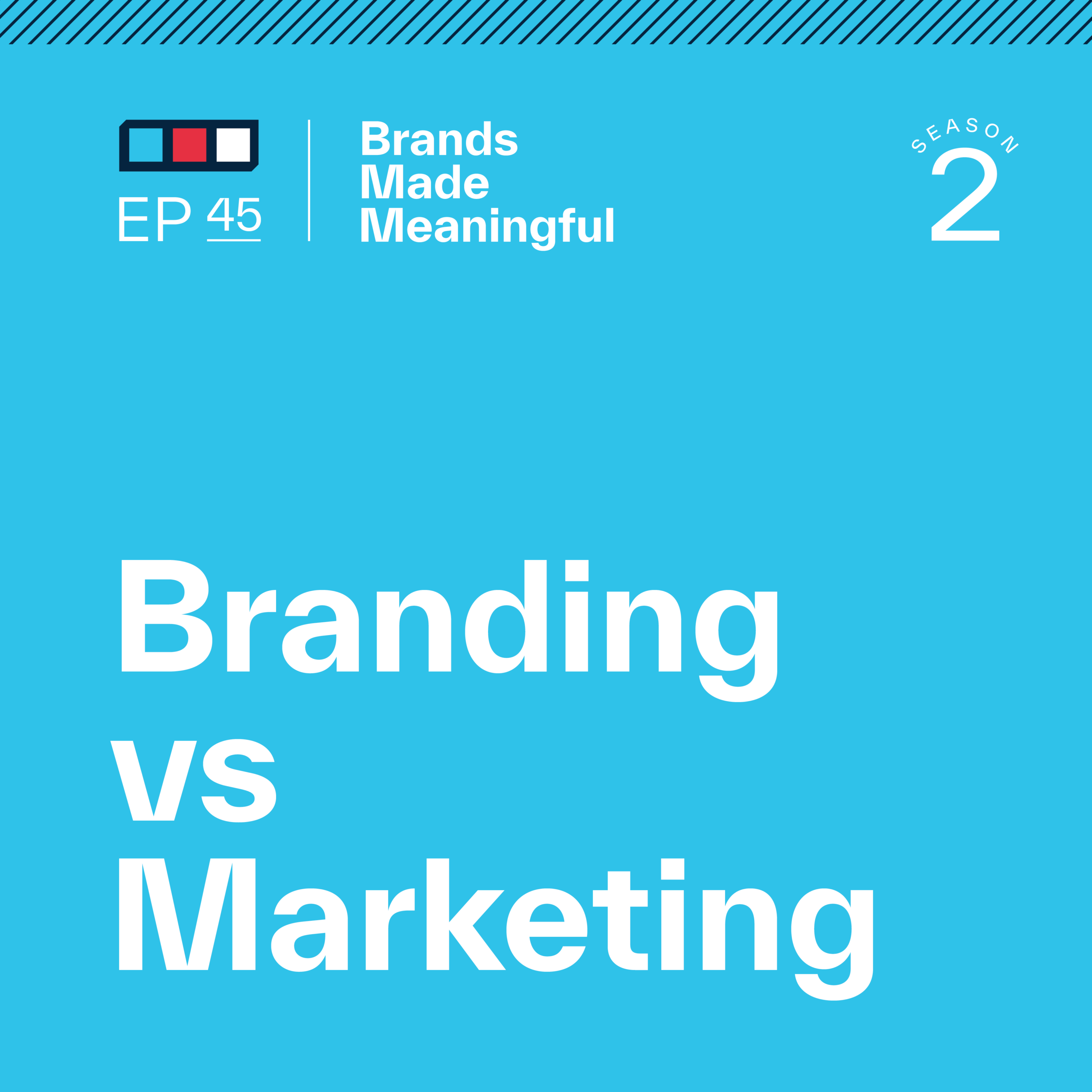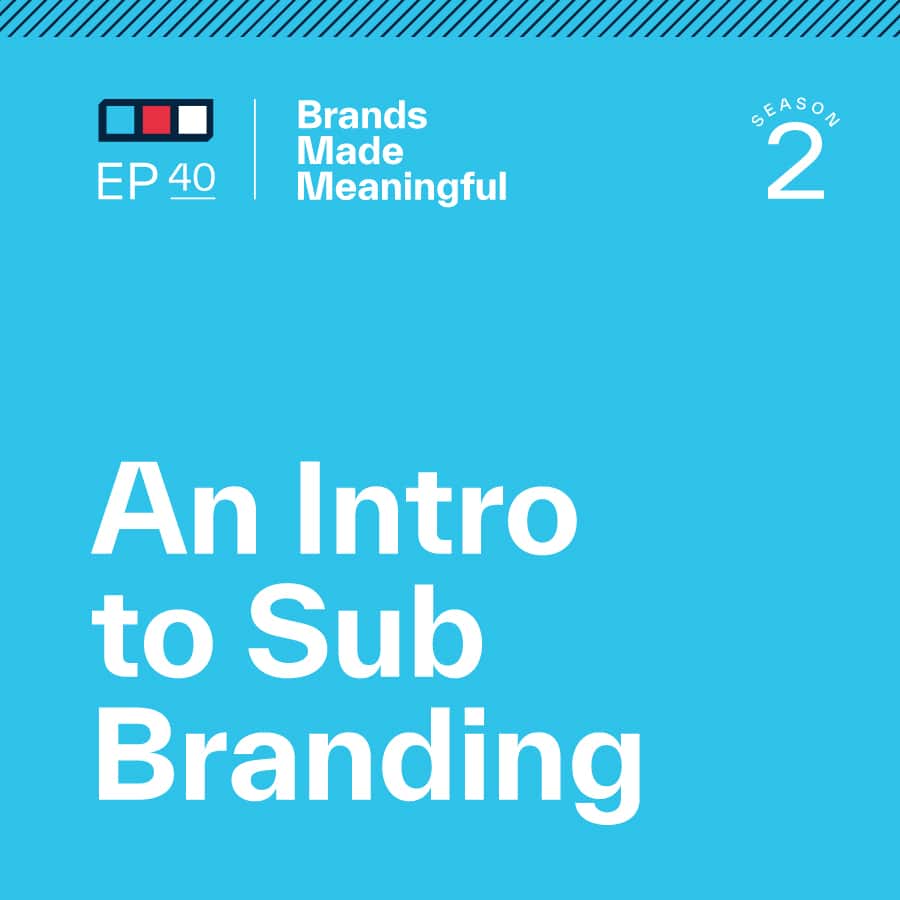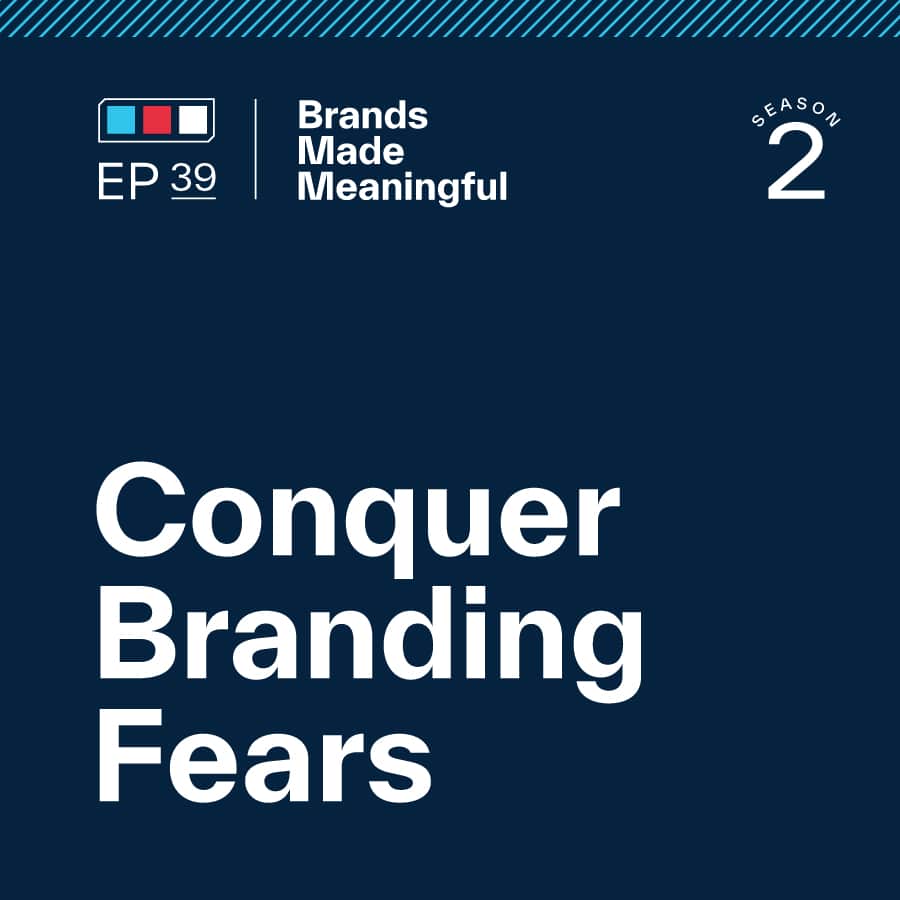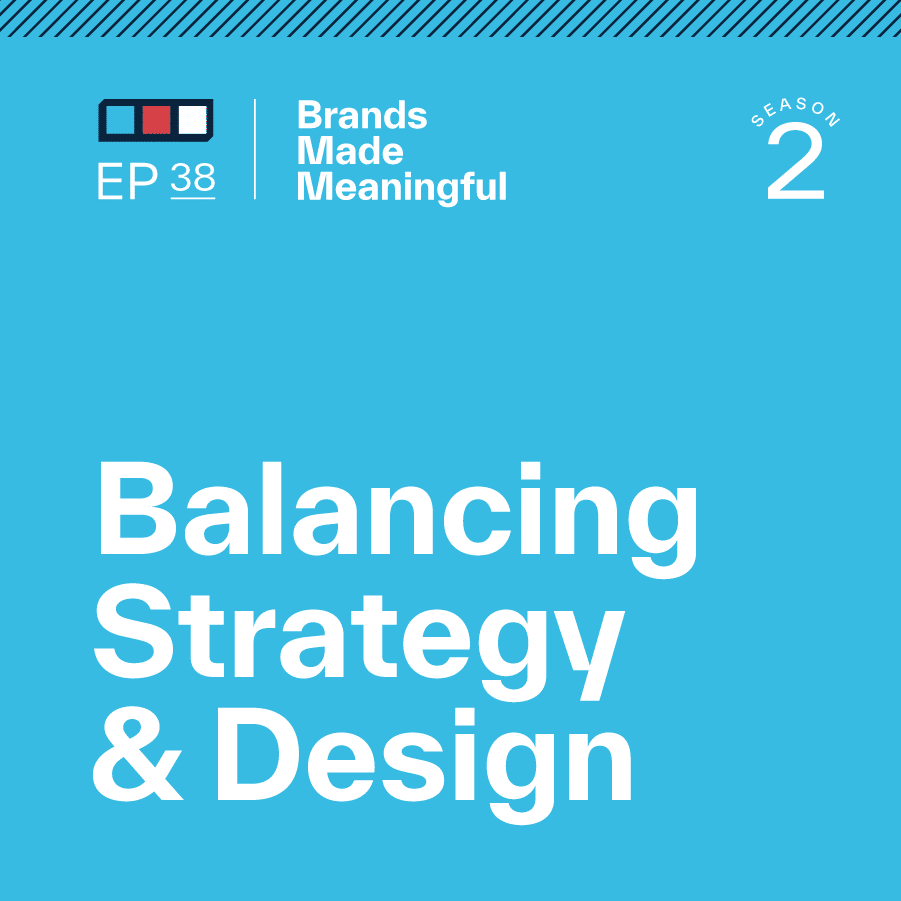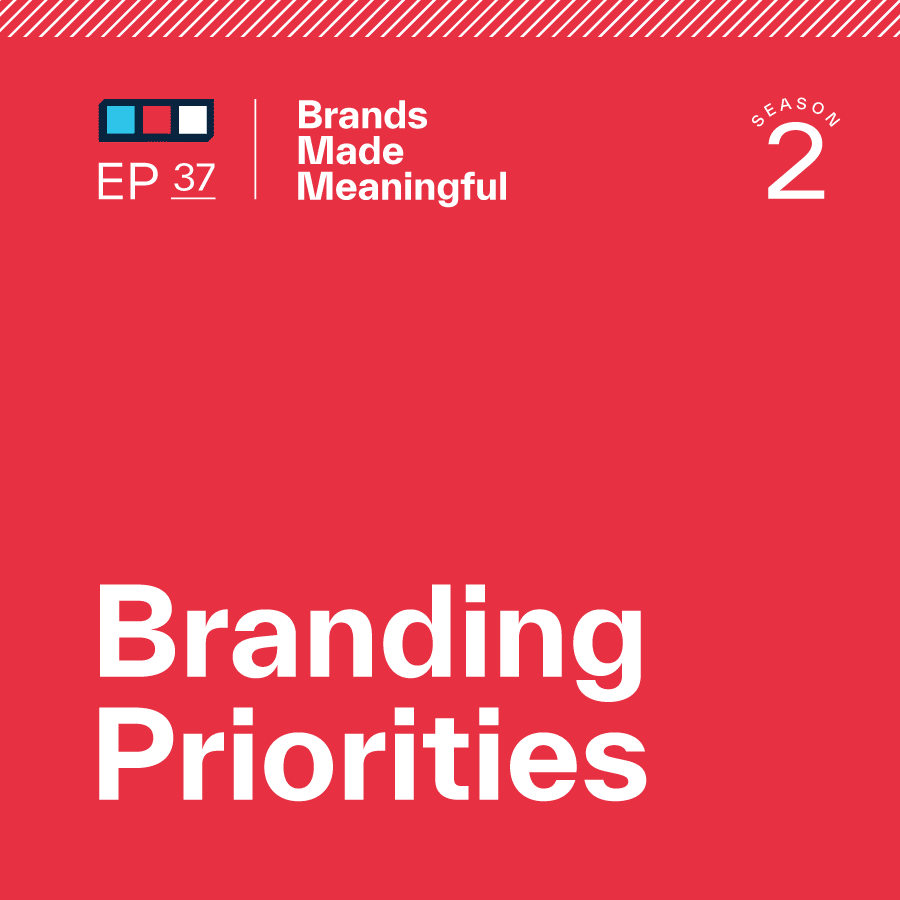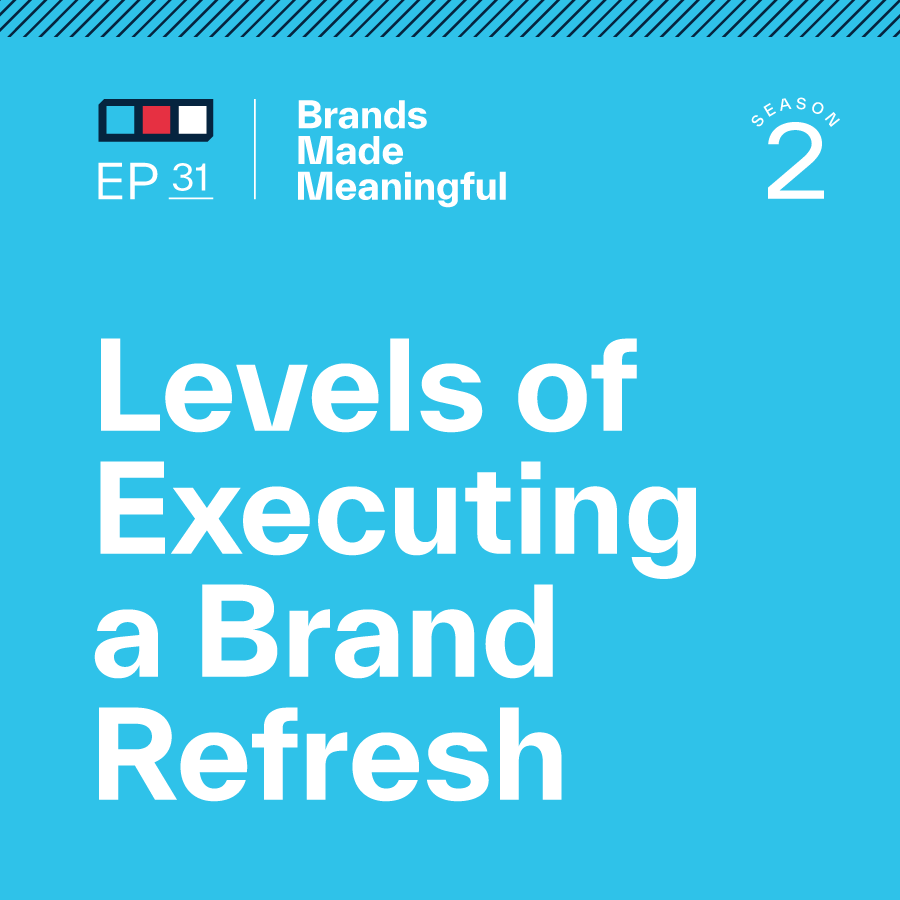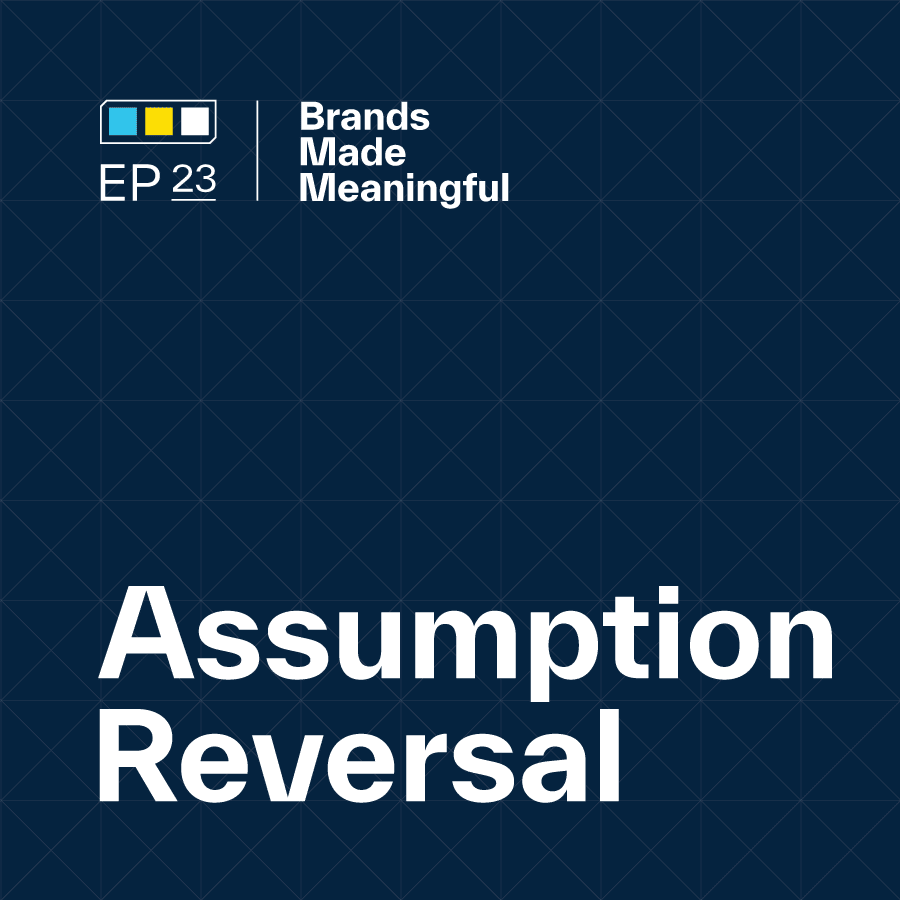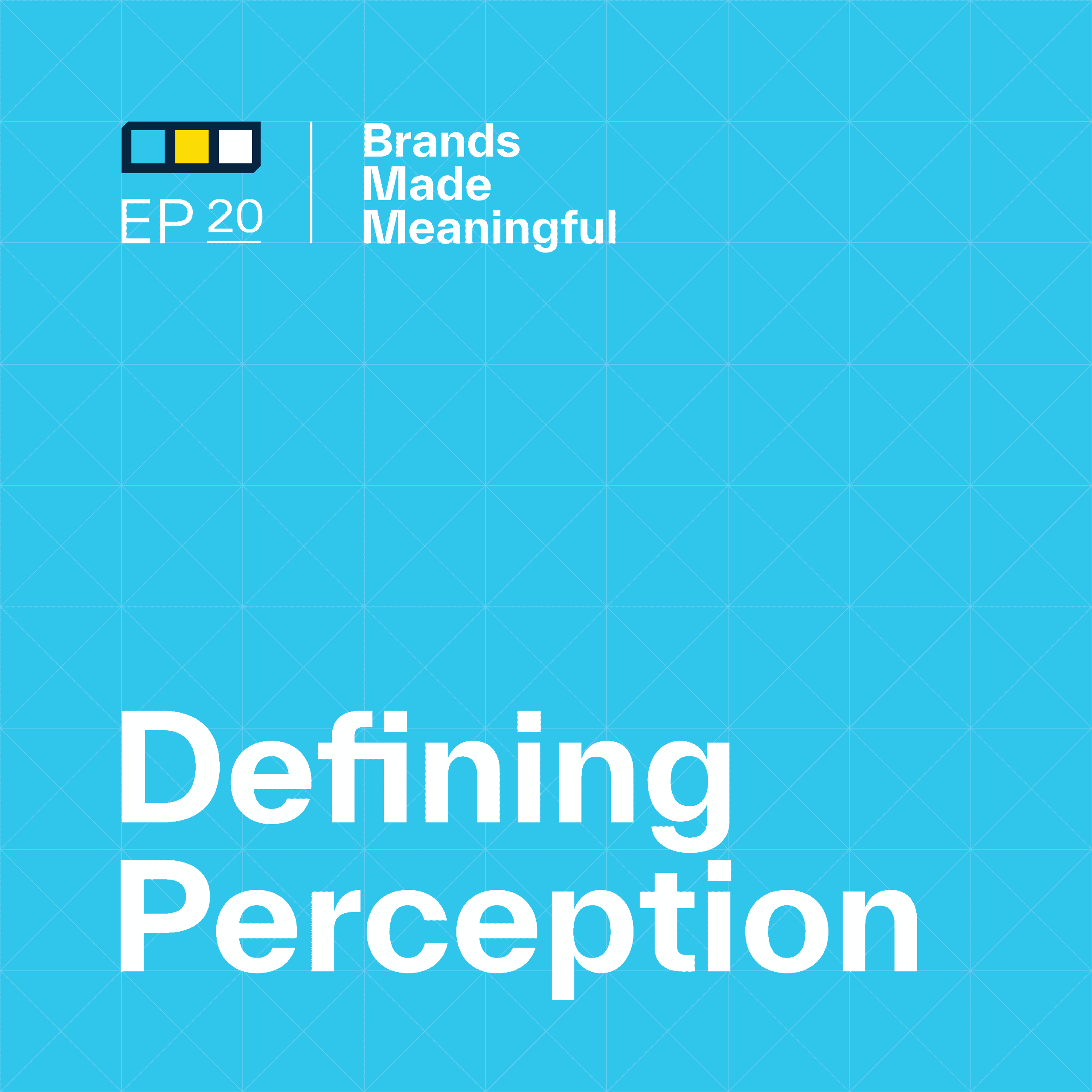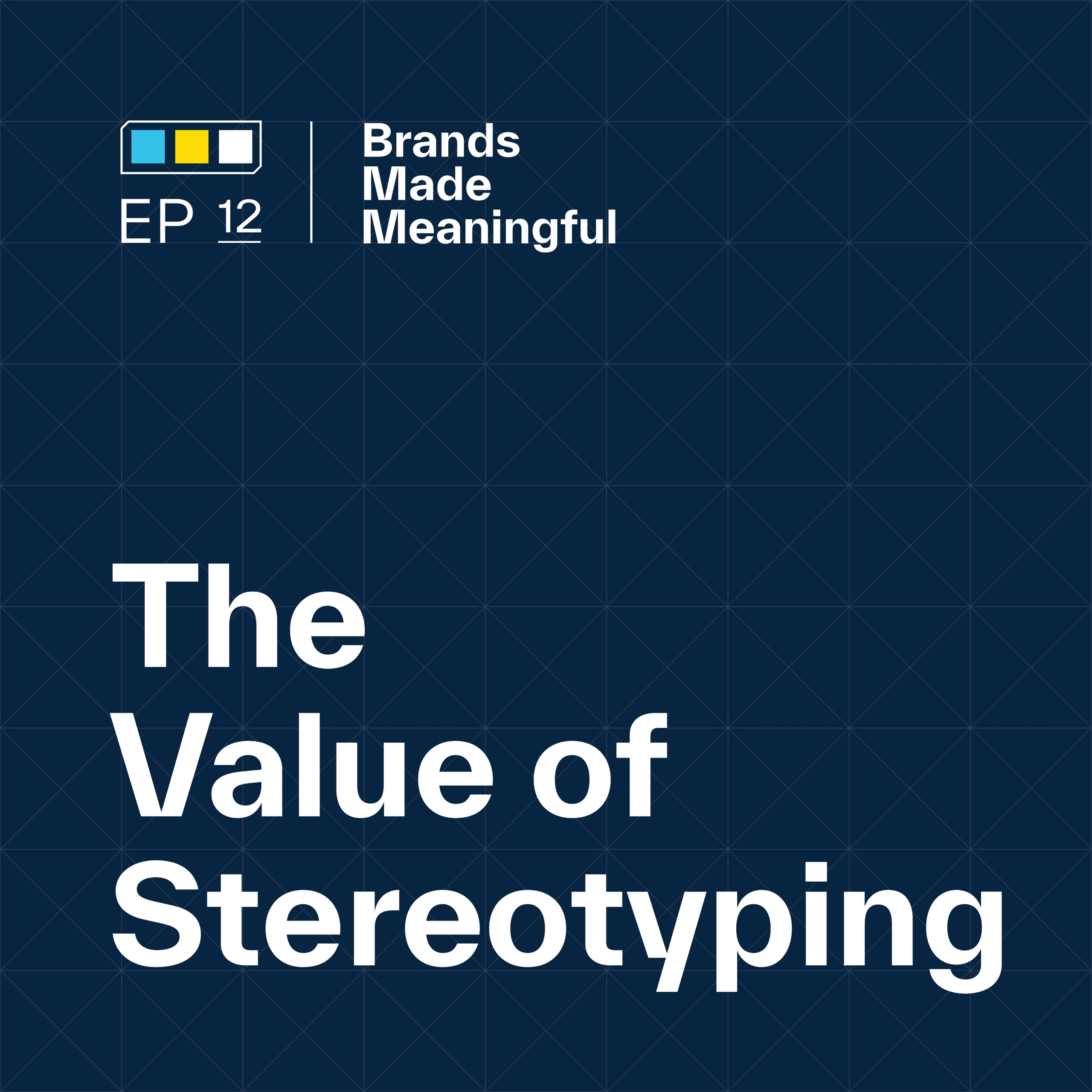EPISODE 67
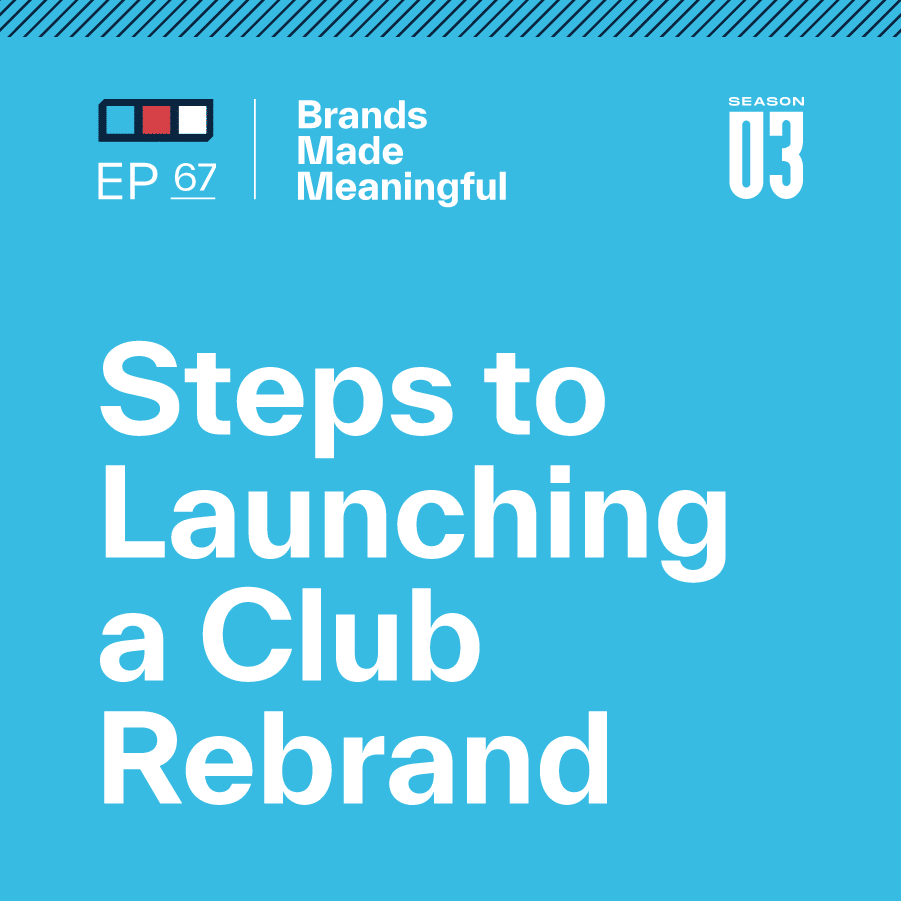
Steps to Launching a Club Rebrand
Episode 67
Derek and Tucker break down the steps to take and the reasons why you should consider a club rebranding.
EPISODE TRANSCRIPTION
What should I be aware of as I’m thinking about launching a rebrand?
Tucker Roadmap is a good way to look at it. What we want to get across is what I should be thinking of if I’m a GM, if I’m a director of membership, if I’m a director of marketing for a club. What should I be aware of as I’m thinking about launching a rebrand? And then how could I start going about that? That’s really the conversation today.
Expand Full Transcript
Derek Welcome to Brands Made Meaningful conversations with the team at Sussner about how purposeful branding inspires unity, identity, and powerful change for growth-minded organizations. Tucker, What are we talking about today on Brands Made Meaningful?
Tucker The steps to launch a club rebrand has been super topical for our office. We have a couple of clubs we’re working with now who are going through this part of that process. We always have some process going on in the background so I thought maybe the best conversation today would be talking about the steps of launching that club rebrand. What we’re not talking about, which I do want to talk about at some point, is when you should launch a club rebrand. I think we go through a lot of this process and it’s really custom for a lot of people. But to say, I don’t know, we’re redoing our course or redoing our clubhouse or redoing something, when should we roll this out? And that’s another conversation.
Derek So the win is things in conjunction with timing, seasonal, those sorts of topics. Today what we’re looking at is a roadmap.
Tucker It’s a little bit how.
Derek Key steps.
Tucker Yep, key steps. Roadmap is a good way to look at it. What we want to get across is what I should be thinking of if I’m a GM, if I’m a director of membership, if I’m a director of marketing for a club. What should I be aware of as I’m thinking about launching a rebrand? And then how could I start going about that? That’s really the conversation today.
Derek There are a couple of reasons that this is top of mind for us. One, we’re helping a club go through this at this moment. They have just about signed off on the creative development aspect of their rebrand and now we’re looking forward to being strategic and thoughtful and what comes next. The second reason this is topical or interesting to us is because we know people who have done this wrong.
Tucker Absolutely. And this is hard, by the way. I don’t think that there’s this don’t be dumb – this is easy. This is a super hard, delicate conversation. There are a lot of nuances and a lot of steps. Every membership is different. So these are, I would say, 30,000-foot recommendations on steps. What it comes down to is exactly how to do it. That depends on the membership 100%. But these steps, I think, are pretty tried and true when we look across the board.
Derek I’m reading ahead on our notes and we’ve got four key steps. There’s a step in here that we didn’t include, which is when the clubs who do this wrong, what they do is they skip these four steps and go straight to the fifth, which is basically making a bunch of merch and filling their pro shop. But they skip the thoughtful ways to help you make sure that this rebrand is accepted, embraced, and implemented, and sets you up to be consistent and successful.
Tucker So you’ve alluded to the four steps. There are four steps to doing this. Two of them actually come before you’re going to announce anything at all. One of them is – here’s how we would announce it. And then the last one is – here’s what that means afterward. So there’s a little bit before, middle, and after. Running through them really quickly, make sure that I’m not way left or way right on any of these. So the first one that I would do is – we need to have member involvement in communication early on in this process. If you are going through a rebrand or if you’re working on it in the background, you need to start talking about it. You need to have that early involvement. Engaging members early in the process and gathering their feedback gives them a sense of ownership of this process. So you want to make sure that they feel like they had a say in some place on this. That doesn’t necessarily mean setting out eight logos and saying, Hey guys, pick one. That would be absolutely against my recommendation. But getting their involvement early, whether it’s surveying, interviewing, having conversations, giving them the insights that you have pulled throughout this process to make sure that they feel like they’ve been heard and they feel like their voice has been considered when going through the development process.
Derek What you just laid out is critical. We’ve said this before. Talking with and hearing what the membership thinks, wants, believes, etc., not doing what every single member thinks and believes, but hearing them and then making sure that they understand that they’ve been heard might be one of, if not the most helpful foundational ground steps that that we’ve ever implemented.
Tucker If you’re doing this process meaningfully, you will go through a discovery phase that really helps you understand what members want out of the brand, not what members prefer visually versus X and Y, but it’s more around what you want this brand to convey so that we can go and convey that. That’s what’s really important here. And then creating this communication that’s super transparent. Here’s what we’re doing. Here’s why we’re doing it. Here’s the importance of us keeping moving forward. Here’s what you can expect from us. It’s just super easy. I would say this is rule one in change management.
Derek Take any feedback that you do get when you do that communication with a grain of salt because you’re going to have members or residents that aren’t supportive of this initiative in the first place or don’t understand what branding means, why you’re doing it, or why this takes the financial investment that it requires. So be patient with that feedback. One of the reasons why we are communicating transparently multiple times is again to help the change management and to help bring those people along. The more involved they feel, the more they’re communicated with, the more likely they are to give you their support.
Tucker The best committees we’ve worked with have this level of FAQs in their background, whether it’s written out or it’s just in their head, where they say frequently asked questions about rebrand – here’s what we need to know. That preps everyone on the committee to say, we understand the answers to the questions that people are going to push back with. That gives the members the confidence to say, I went to the committee member, I asked them a question, and they gave me a confident answer back. That gives me confidence in the whole process. So this is super, super important. That’s why it’s number one. It’s critical to the entire success of this launch. The next one is internal training and preparation. So right before you’re going to launch a brand, it’s really important that you train and prep the staff which I would call the brand ambassadors of the club. So the staff is going to be important so when they get questions like, Hey, we redid our logo, what does our logo stand for? Why do we do that? They have an answer to that. That’s really, really important to show this united front. I think it’s like when you talk about parents, right? When I went to talk to Mom versus talking to Dad, I got a different answer. That’s the same thing within the membership. Talking to staff members and getting a different answer across the board makes it feel like no one knows what’s going on. If we can prep staff and we can train them to say they understand what the new brand means, they understand all these components, they understand why we’re doing this, and then they’re excited about it moving forward, that goes a really, really long way. And then when we talk about brand ambassadors, identify brand ambassadors early on. If someone goes, What’s a brand ambassador? It’s the members in your club that have lots of influence and those are the people you want to be involved in the process, understanding the process, and being really excited about it. Ambassadors is one way to say it. Maybe brand evangelists is another way to say it.
Derek It’s a great word.
Tucker Those who go to bat for you and say, Hey, here’s what we’re doing, here’s what we’re all about, we’re really excited about the brand. Have any questions? Let me know. That type of person is critical for this process, too, because they’re going to make the other members excited about what’s going on.
Derek And I would include staff in that brand advocate role, too. There are likely people, and it’s not necessarily the GM or the communications director. It might be somebody like in a club that we’ve just worked with. It was their food and beverage director. She was over the moon excited to answer the questions that people asked when they said, What is all of this? And I would say her answer should be memorable, not necessarily memorized, but memorable, so to your point, it’s answered consistently. She’s able to talk about what the new logo means, what the story is, and why that supports that club’s mission and vision. She was super clear and she said, Now I can answer. She said I have clarity for the first time in a long time when members or other staff ask me a question about why we are doing this. Why are we putting out this menu? Why are we heading in this direction? She goes, Now I have an answer for all of them.
Tucker So it might be a GM, it might be a membership director. Every club has that one staff member who the membership loves. They go to them, they talk to them. They give you a look and go, What do you really think? Give me the real what’s going on. Sometimes it’s your head pro, sometimes it’s your lead bartender. We’ve seen clubs where the lead bartender has so much sway because members go to him and say, Hey, give me the real stuff. What’s going on here? And that’s critical as a GM, as a director, for you to identify those people and make sure they’re on board and they’re included. That makes it super easy to then roll it out in the future. The next one is the announcement. So if the first two were all about pre, let’s prep, let’s get it ready, let’s get people involved early on, then the next one, this third one, is all about the announcement. Strategic announcement is critical. So thinking about the launch event and like I said, we’re not going to talk about when that event is, but just what that event is, making sure that you understand that just kind of putting it in the shop and letting people see it is not a good plan. That that makes people go, what is this and why is this here? And there are so many unanswered questions that make people feel like someone kind of stole something in the night and then just replaced it.
Derek They feel like the rug has been pulled out from under them. They love their club. If they love their membership and they have a strong association with their brand, which is back to the communication, if they’ve been brought along the path the right way, this would be an appropriate unveiling part of the process. Not a shock to the system. Not a big reveal, so to speak.
Tucker You don’t really want it to be a tada. I think that there are a lot of people who go, I don’t want to tell anyone anything and then just go boom, look, here it is. That’s a surefire way to get people upset. So what I would say is make sure you have an event of some sort. Get people involved, get people excited. Whether it’s the GM, whether it’s the person leading the project from your club, whether it’s someone on our team that does it, make sure that you’re having a presentation that says, Here’s what we set out to do, here is how we did that, and here’s what that looks like overall.
Derek We had a club call this event a town hall. I think it’s a celebration. A town hall to me conveys we’re going to come together and we’re going to vote on something that’s controversial. We’re going to throw some Q&A at the panel about why we should or shouldn’t do something. This is an opportunity to bring the membership together and celebrate and get them energized and get them on board and in line and excited about not only what this branding looks like and means, but what it means for where the club is going next.
Tucker When we talk about events, it probably includes some food. There’s probably presentations, there’s a get-together, there’s some kind of, think of it as a party, think of it as a celebration, like you’re saying. But the most important thing is that you’re conveying the future. That is super important when you get to these types of events. It’s not necessarily about the history. It’s about how the history is the history. And what we’re trying to do is look forward and be excited about the future. That’s going to be what this event is all about. And then I would pair that, if that’s 1A for this strategic announcement, Step 1B would be we need some kind of multimedia approach, whether that is recordings of conversations, whether that’s a presentation that someone puts out somewhere, whether that’s a video like we’ve done – one-minute long videos that convey this in some kind of rapid graphic form to say, Hey, we were this, now we are this, here’s why and here’s where we’re going. There’s a really, really nice way to pair all of these different elements, whether it’s physical, digital, all these things together to showcase. We’re really doing this. This is not just, we’re thinking about it, here’s potentially something, what do you guys think? It’s here’s what we’ve done. We’re really excited about it. Here we go. Confidence is so key here. Being confident can really change the tone of how a membership reacts.
Derek And implementing design and creating all of those pieces as part of this unveiling of this launch event of this process supports that confidence. It’s not like we’re going to kind of timidly put this out there and then if the membership supports us, we’re going to go create at all these things. We’re past asking for their approval at this point. We’ve moved towards getting them excited and on board. We’ve seen clubs have a bunch of merchandise stitched out with a new logo. We’ve done brand videos for clubs that in a minute basically summarize the entire process. It summarizes the strategic direction, the creative development, the before and after, and the culture and spirit of that specific club. And it’s so hard to do. I don’t know that anything does better than a video. You could have music, motion, and sound. It’s emotional. It’s awesome.
Tucker For those of you listening going, what do you mean? Video? How does this all work? If you go to our website and you go to the Golden Valley case study, the video that we are talking about is right there. It’s at the top of the case study. It will walk you through what that minute-long video could look like. It’s got hype to it. It’s got excitement. It has this level of energy to it. And there’s a little bit of that is their brand so just keep that in mind as you go forward. If you want an example, go to our website. There are examples on there. A lot of members love them because that gets them really excited about what’s going forward. I think a lot of clubs don’t leverage all of the new creative type work that they could, and this is a great way to kind of push that forward. The last one is constant, consistent implementation. There’s a thought of most GMs that say, my gosh, we have to put this new brand across the entire club before we tell anybody about it. No, that is not the case. Every club is different. Some clubs have the opportunity to do that. If you’re a club where your members maybe go away during a certain season and they come back, maybe there’s a great opportunity to do that type of work. A lot of clubs have members all year round. There’s not a great time to close the club and reface everything. If you can do that, that’s an awesome way to do it. If you can’t do that, there are critical pieces of your club, the touchpoints, that members have on a daily or weekly basis that can help showcase this new brand while you’re trying to do it across every single club. You guys have thousands of touchpoints. There’s pro shop, there are tee boxes, there’s signage, there’s tennis court screens. There’s a million things that you can do. So it’s important to understand maybe the phases of these to say, priority one is to do this. This is what needs to be done by launch. And here are those things. That might be things like our website needs to be redone. We have to reface our applications, we have to redo the menus and our food and beverage systems. There’s just a handful of things in there. That gradual rollout is going to be important to show members that this is not just a fleeting moment. This is happening and we are doing this. And here’s the first phase of that. Then in 2 or 3 months, there might be another phase of rollouts when you get all the new stuff in and maybe it takes a little bit to get some of those smaller pieces. But it’s important to make sure that you’re doing it consistently so that you’re adhering to those new brand standards and that you’re doing it in a way that allows people to slowly immerse themselves into all of it before it’s all flipped over.
Derek That step of prioritizing, maybe the highest visibility touchpoints first, makes all of that implementation a little less overwhelming because the list that you just started to go through is sort of the tip of the iceberg on what clubs potentially could or should be considering and that’s an overwhelming list.
Tucker Some of this stuff is easier than other stuff. Like when we talked to pros in their pro shops, they said, We have to order merch anyway. So obviously we’ll have to go through that. But what about the old stuff? You can still sell the old stuff until it’s gone. I think that there’s this level of people going, Gosh, we have to be so professional we can’t show the old stuff ever again. In two years, if you still have the old logo and the old brand on stuff, that’s probably an issue. If by next season things are flipped over, I think that you’ve done a really good job.
Derek Absolutely.
Tucker As we go forward, there are pieces of importance to say. If a GM was talking to me and they say, Okay, so why should I care about rolling this out really well? Aside from the fact that you’re investing a lot in this process bringing in people or changing over all these materials, it’s expensive to rebrand it. I don’t think that there’s any kind of sugarcoating on any of that. This is a huge investment for the club. So aside from making sure that investment lands, why should someone care about this if they’re in a leadership role?
Derek Well, first, back to the change management point of view, it helps build trust with your membership and with the staff. The transparency that we talked about is so important to bring people on board. One of the comments that comes up all the time in member and staff interviews that we do on our discovery process is I just want to know where they’re taking us. I just want to know what’s next. So if that’s done right, the general managers then can become seen as the face of that movement.
Tucker There is a level of a well-executed rebrand at a club that makes the general manager look amazing. There is this level of that is really hard to do. I can’t believe you ushered in a new era for our club. That’s impactful for a lot of people. I know that the GM doesn’t necessarily think selfishly of themselves, but to look at this and go, this is an opportunity for a GM to really showcase their ability to move a club through a transition.
Derek The board is going to turn over. The president of the board will turn over.
Tucker Absolutely.
Derek The committee will fade away once the project and the initiatives are wrapped up. Of course, they want to look great and, of course, they want to make what they’re doing have a positive impact. And that positive impact will absolutely reflect well on them.
Tucker We’ve worked with enough clubs where the GM goes, I don’t know, do I need to be involved in this process? Absolutely, you need to be involved in this process. You being involved in this process creates this confidence and this importance to this type of a process that gives members this sense that this is real instead of just a committee going down their own path and they don’t really know what they’re doing and no one’s involved from a leadership standpoint. So it’s important to be involved. But, back to your point, this brings us to consistency. The GM is a very consistent piece of this puzzle to figure out how from a leadership level they understand the brand, embrace the brand, and live it to the point that they can make decisions and they can make experiences more cohesive is really important. So a GM being involved in this process creates a sense of consistency across the club because the brand is seen across the club.
Derek In business operations, we talk about the difference between being accountable and responsible. So the GM might not be the keeper of the brand book. He or she may have people on their team who – I hate to use the word police, but I’m going to use it – police, manage, oversee the consistency and the usage. But the GM, in our opinion, should be accountable for the people who are making sure this is all done consistently, even if they’re not actually the ones who manage it themselves.
Tucker The best GMs that we’ve worked with on a rebranding project have embraced this to the point where, and they should, they used this in all their decision-making to say, We stand for this, this is who we’re for, and this is the type of experience we’re trying to create.
Derek We’re replacing our chef. What kind of chef do we need? Of course, we want someone who has incredible culinary skills and training. And probably a certain level of, I don’t know, charm or human interaction abilities within the club and the people. But what if you could also say we also need a chef who supports our vision of becoming a club that is about this?
Tucker The next one is member retention and engagement. So the importance for GM in making sure this process works well for their club is making sure that you retain members that you want to retain and that you’re engaging them and that they’re excited about what we’re doing. So there’s this level of if the GM is heavily involved and they are all in on figuring out the best way to engage the membership, they’re going to bring that to the table and they’re going to say, Well, I know the membership. Here’s what we need to do and here’s how we need to do this. And owning that and living that is incredibly important to making sure that this investment goes off without a problem.
Derek There’s another topic that may or may not be an entire podcast conversation that has come up recently in various conversations around member engagement and member satisfaction. The financial reality is that clubs that are healthy, that have a healthy waiting list, also benefit from some turnover financially because you have new members coming in and they’re paying new initiation fees. Just like an assessment for a golf course renovation will probably result in a handful of members leaving because they don’t support paying for that, a rebrand, if you have a couple of very strong opinions, if they choose to leave, as long as it’s a very small number, there’s a business component of this that is a little bit of something people don’t like to talk about, but it’s true.
Tucker And it is who we are and what we’re all about.
Derek And who we’re for.
Tucker And where we’re going. And that can be a conversation that many tenured members either agree with wholeheartedly or they don’t agree with. I’ve been here for 25 years.
Derek And we’ve always been about this. And now you’re telling me we’re about that?
Tucker And to say that’s not what I think, they might not be the right fit for the membership.
Derek This is the way our old GM used to do things. Why are you doing it a different way?
Tucker It’s a good question. So takeaways as we as we wrap this up. The successful rebrand I think has pivoted that launch. If it’s launched poorly, it almost doesn’t matter how much work you’ve done before that to make sure it’s successful. The launch is the first look at something. When someone sees something, their first impression is critical when it comes to this type of work because you might see it and you might hate it. And it’s going to take a long time for someone to get from hating it to loving it. That’s going to take a lot of effort to get there versus getting them to understand it and getting them to embrace it at the beginning makes that change so much easier. Change is so hard for so many people. This process is change. If I was to summarize it in one word, what you are doing is managing that change well.
Derek So if you roll this out strategically, because this is an approach to do this, to help you do it right, it results in trust from members, from staff because they feel involved. It ensures consistency of when and how – we’ll talk about when later – the brand is rolled out meaningfully and it enhances member satisfaction. And I think maybe more than anything, it gives you the opportunity to enhance the overall image of the club itself.
Tucker Think about the way that you present yourself creates this sense of professionalism too. If you roll it out in a sloppy way, that’s not thoughtful, it makes you look sloppy and not thoughtful. So rolling this out in a very meaningful, strategic, professional-looking way that says, Hey, we’re doing this. That can really go a long way to making people excited about it and understanding what you’re trying to accomplish.
Derek Well said. I don’t have anything to add to that.
Tucker You shouldn’t. Next time we’ll talk about when and where. Maybe. Until then, thanks for listening.
Derek Talk soon. Sussner is a branding firm specializing in helping companies make a meaningful mark, guiding marketing leaders who are working to make their brand communicate better, stand out, and engage audiences to grow their business. For more on Sussner, visit Sussner.com.
More Episodes Like This
Changing a Club’s Membership ModelEpisode 83
Derek and Tucker discuss key considerations and challenges when changing your club’s membership model.
Connecting a Club with its Story with Jackie CarpenterEpisode 82
Derek and Tucker are joined today by Jackie Carpenter, author of People First.
Branding a Club AnniversaryEpisode 81
Derek and Tucker discuss the unique opportunity presented by milestone and anniversary dates for private clubs.
Private Club Storytelling with Ricky L. Potts, Jr., CCMEpisode 80
Derek and Tucker have the pleasure to speak with Ricky L. Potts Jr. about how powerful storytelling can be for your club members.
Opportunity in Club Facility RenovationEpisode 79
Derek and Tucker discuss pivotal key moments in your legacy and how to transform your story through renovation.
The Evolution of Club Members with Jon LastEpisode 78
Derek and Tucker are joined by Jon Last from Sports & Leisure Research Group to discuss the evolution of club members.
Member Branding vs. Product BrandingEpisode 77
Derek and Tucker discuss the challenges their client's have moved through when approaching differing styles of branding.
The Role of a Private Club's LogoEpisode 76
Derek and Tucker take a look back on private club logos they've designed over the years and explain the strategic reasons behind their choices.
Club Brand GovernanceEpisode 75
Derek and Tucker divulge the steps to evolving your brand while retaining your core values.
Seasonal Member MerchandiseEpisode 74
Derek and Tucker take a look at crafting specific merch to celebrate landmarks and special times of the year.
Who is Sussner?Episode 73
Derek and Tucker take a break from talking shop to talk about who they are and what they stand for.
Club Identities Beyond AmenitiesEpisode 72
Derek and Tucker discuss what it takes to stand out in unique ways for your club.
Little Things Mean EverythingEpisode 71
Derek and Tucker take a look at the often missed and easy to overlook.
Build Flexible Brand SystemsEpisode 70
Derek and Tucker break down the building blocks for long lasting branding.
The Club at Golden ValleyEpisode 69
Derek and Tucker take a close look at one of their recent rebrands.
When to Launch a Club RebrandEpisode 68
Derek and Tucker break down how to find the perfect timing when launching a club rebrand.
Steps to Launching a Club RebrandEpisode 67
Derek and Tucker break down the steps to take and the reasons why you should consider a club rebranding.
Brand Marketing vs. Brand DesignEpisode 66
Derek and Tucker define the line between marketing and design and how they intersect to inform one another.
Building Brand GuidelinesEpisode 65
Derek and Tucker show us how to build infrastructure guidelines to unify your brand experience across the board.
Club Identity SystemsEpisode 64
Derek and Tucker cover what Identity Systems entail and how to discern between internal and external methodologies.
Navigating Branding With a BoardEpisode 63
Derek and Tucker bring clarity to uniting your company under one cohesive vision.
Putting a Committee TogetherEpisode 62
Derek and Tucker assemble your need-to-know facts when putting together your committee.
The Guiding Principles of Private ClubsEpisode 61
Derek and Tucker go over the top ways private clubs can find the balance between pleasing old members while attracting new ones, all while making moves towards the future.
How Color Affects PerceptionEpisode 60
Derek and Tucker cover how to best convey your business with color.
Brand EcosystemsEpisode 59
Derek and Tucker break down how to craft effortless experiences when considering your brand as a whole.
6 Types of Brand TransformationEpisode 58
Derek and Tucker dive into 6 distinct types of transformations for a wide range of brands.
Tournament Branding For ClubsEpisode 57
Derek and Tucker discuss designing and delighting your club members with tailored events.
Brand Promoters & DetractorsEpisode 56
Derek and Tucker discuss how high level promoters increase your NPS and how to turn the tides on your detractors.
The Loudest Voices in the RoomEpisode 55
Derek and Tucker talk about gathering feedback while prioritizing every voice.
Determining A Primary AudienceEpisode 54
Derek and Tucker discuss if and when you should be honing in on your audience vs. casting as wide a net as possible.
Branding For ExclusivityEpisode 53
Derek and Tucker discuss the intricate process of naming your brand.
Measuring Brand SuccessEpisode 52
Derek and Tucker discuss how we measure our success in branding and a few key KPIs that help us understand our impact.
Branding For ExclusivityEpisode 51
Derek and Tucker breakdown how brands can create the perception that they are exclusive and only for a certain type of consumer.
What Makes A Brand SurprisingEpisode 50
Derek and Tucker break down the Sussner formula that we believe leads to a surprising brand.
Breathe Life Into Brand TraditionEpisode 49
Derek and Tucker discuss the intricacies and common pitfalls of branding for Private Golf Clubs.
They Key of Visual DifferentiationEpisode 48
Derek and Tucker break down the importance of differentiating your brand on a visual level.
Branding For Private GolfEpisode 47
Derek and Tucker discuss the intricacies and common pitfalls of branding for Private Golf Clubs.
Dealing With An Identity CrisisEpisode 46
Derek and Tucker breakdown how to identify and remedy a brand's identity crisis throughout thoughtful and intentional brand management.
Branding vs MarketingEpisode 45
Derek and Tucker discuss the differences between Branding and Marketing and how to make the two compliment each other.
Build Your Brand's FoundationEpisode 44
A brand's foundation is a critical element in being successful in the long-term.
Building a Constructive Branding ProcessEpisode 43
Derek and Tucker break down the steps required to build the most constructive and meaningful branding process.
What Makes a Brand Relevant?Episode 42
Relevance is a key piece of a brand's identity for creating clarity and connection.
Your Right to WinEpisode 41
Derek and Tucker discuss the “Right to Win” and the odds of your brand's success within your target market.
An Intro to Sub BrandingEpisode 40
Derek and Tucker discuss the nuances of developing sub-branding and strategies.
Conquer Branding FearsEpisode 39
Derek and Tucker dive into how to overcome the fear of change and the nature of constant refinement of your brand.
Balancing Strategy & DesignEpisode 38
Great strategy is a necessary foundation for great design—and great design brings great strategy to life.
Branding PrioritiesEpisode 37
Branding priorities are the actions and initiatives that shape or enhance a brand's identity, perception, and market position.
Invest in Your BrandEpisode 36
Investing in your brand benefits your company as a competitor in the marketplace, builds trust with customers, increases perception of quality, and drives employee engagement.
Why is Positioning Scary?Episode 35
Narrowing the brand's position is really a strategic decision to focus the brand's offerings, messaging and target audience on a specific niche or segment within the market.
What Are Brand Consultants?Episode 34
Derek and Tucker discuss the importance of hiring expertise with a wider breadth of knowledge than just visuals.
Hire for Brand FitEpisode 33
Hiring people that fit your brand is key in order to maintain brand authenticity, positive culture, and consistent messaging.
Your Brand’s Stance MattersEpisode 32
Your stance can help define your brand from a core level and make branding, hiring, and marketing not only easier, but more meaningful.
Levels of Executing a Brand RefreshEpisode 31
If you have a brand strategy in place, how do you execute it?
The Role of Features & BenefitsEpisode 30
Derek and Tucker discuss the importance of features and benefits within the context of branding, selling, and marketing your products and services.
Should You Listen To or Lead Your Customers?Episode 29
Within the challenge of any rebrand is the challenge of managing customers' perception of change.
Managing a Brand TransformationEpisode 28
Episode 28 discusses the highlights and challenges of rolling out a new brand, both internally and externally.
Living Your BrandEpisode 27
Your brand is not this shiny trophy on the shelf. It is something that you are molding every single day.
What Makes a Brand Authentic?Episode 26
Season 2 starts off with a discussion about building authentic brand experiences, both internally and externally.
Reviewing your Competition's CreativeEpisode 25
Derek and Tucker discuss the process of reviewing your competitors' creative strategy to better position your brand within the market.
Interviewing your Audience for InsightsEpisode 24
This episode details the process and benefits of interviewing your audience as part of the branding process.
Assumption ReversalEpisode 23
Derek and Tucker discuss how we change our thoughts and get into a different mindset to refine and revise our branding.
Developing vs. Amplifying a BrandEpisode 22
Another way to say it is, development is building and crafting your brand story, and amplification is then telling it.
Refreshing a Sporting Goods BrandEpisode 21
This episode shares the steps behind Sussner’s work in refining the Shock Doctor brand.
Defining PerceptionEpisode 20
Derek and Tucker discuss the positive and negative impacts of brand perception.
What is a Brand?Episode 19
Derek and Tucker discuss what defines a brand and what makes them successful.
Branding Golf Courses vs Golf ClubsEpisode 18
Derek and Tucker further hone in on golf course design.
Refreshing a Golf CourseEpisode 17
Derek and Tucker discuss the bar for golf course design – and how to push past it.
Let’s Talk Taglines Episode 16
Derek and Tucker talk taglines in today's episode.
Refreshing an Athletic DepartmentEpisode 15
Derek and Tucker sit down today to discuss what logos mean within branding.
Branding a Club Episode 14
Derek and Tucker discuss how to brainstorm branding a club.
An Intro to Internal Branding Episode 13
Derek and Tucker discuss the power behind internal branding.
The Value of Stereotyping Episode 12
Derek and Tucker sit down today to discuss the meaning of stereotyping within the branding world.
We’re on a Mission Episode 11
This episode digs into the rallying cry for the greatness your team is going to accomplish.
Aren’t Brands Just Logos? Episode 10
Derek and Tucker sit down today to discuss what logos mean within branding.
The Business You Are Really In Episode 09
Derek and Tucker sit down today to discuss how to discover what business you are really in to better understand your mission statement.
Clarity of Vision Episode 08
Derek and Tucker discuss the importance of looking ahead towards the big picture to better hone the purpose behind what we do in the now.
Branding B-2-B Environments Episode 07
Derek and Tucker discuss the Branding of Spaces.
It’s All in the Name Episode 06
Derek and Tucker discuss what a name can say - and not - about your company.
Delving Into Branding Data Episode 05
Derek and Tucker jump into the discovery phase of branding before it hits the drawing board.
Content Made Meaningful Episode 04
Today Derek and Tucker discuss the concepts within content and its common misconceptions such as the phrase "Content is King."
Brand Story vs. Brand Messaging Episode 03
Your story matters.
Visuals That Take The Cake Episode 02
Derek and Tucker sit down to discuss visual impact and what that could mean for your brand.
Are You Different or Distinct? Episode 01
It's not about being the only option, it's about being the right option. Join Derek and Tucker as they discuss Differentiation & Distinction.



